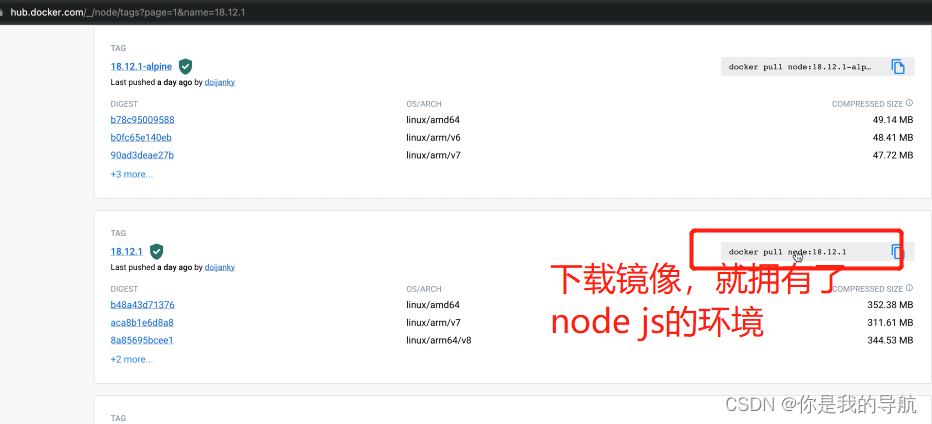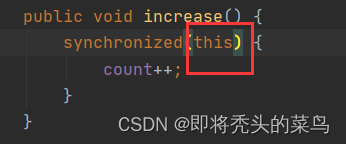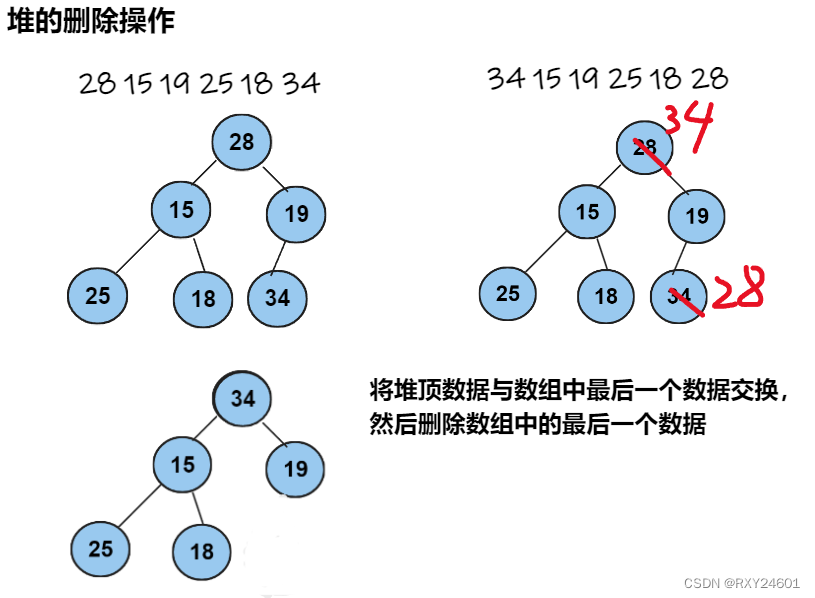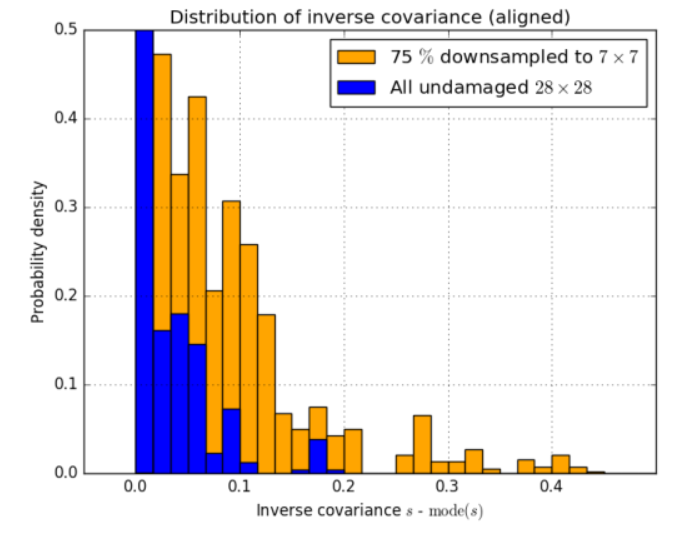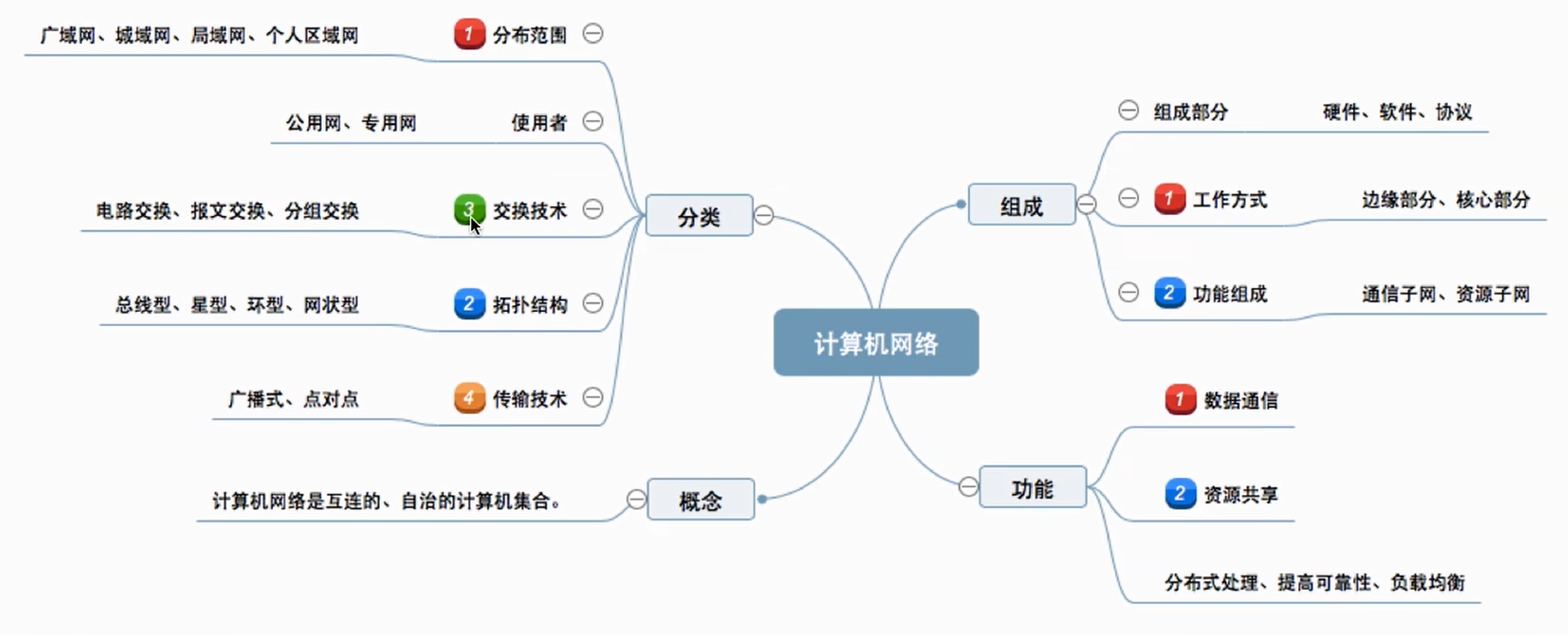文章目录
- 前言
- 一、对上一篇博文的分析
- 二、配置文件分析
- 1. nginx 官方网址(很详细)
- 2、配置文件(全)
- 3、配置文件(去掉注释)
- 4、讲解
- a、nginx 配置文件有三部分组成
- b、全局块
- c、events块
- d、http块
- 5、http块中location
- a、描述
- b、示例
- c、更多详细
- 三、负载均衡篇
- 1、算法分析(共5个)
- 2、upstream块及参数详解
- 四、更多内容在官网文档中,有时间在继续输出
前言
- 看这边博文时,强烈推荐看上一篇nginx实操博文:nginx学习,看这一篇就够了:下载、安装。使用:正向代理、反向代理、负载均衡。常用命令和配置文件,很全
- 上一篇博文,讲的很详细;但是并没有对配置文件、负载均衡算法做进一步的解析和学习,这一次我就单写一篇作为理论篇。
- nginx 版本:
nginx-1.22.1
一、对上一篇博文的分析
- 案例 1.1、1.2 都是反向代理的运行
- 案例 2 是反向代理+负载均衡的运行
- 案例 3 是反向代理+动静分离的运用
- 案例 4 是nginx高可用集群的运用
二、配置文件分析
1. nginx 官方网址(很详细)
nginx 官网:http://nginx.org/en/nginx 文档:http://nginx.org/en/docs/nginx 官网(中文):http://nginx.p2hp.com/nginx 文档(中文):http://nginx.p2hp.com/en/docs/index.html- 推荐看英文
2、配置文件(全)
#user nobody;
worker_processes 1;
#error_log logs/error.log;
#error_log logs/error.log notice;
#error_log logs/error.log info;
#pid logs/nginx.pid;
events {
worker_connections 1024;
}
http {
include mime.types;
default_type application/octet-stream;
#log_format main '$remote_addr - $remote_user [$time_local] "$request" '
# '$status $body_bytes_sent "$http_referer" '
# '"$http_user_agent" "$http_x_forwarded_for"';
#access_log logs/access.log main;
sendfile on;
#tcp_nopush on;
#keepalive_timeout 0;
keepalive_timeout 65;
#gzip on;
server {
listen 80;
server_name localhost;
#charset koi8-r;
#access_log logs/host.access.log main;
location / {
root html;
index index.html index.htm;
}
#error_page 404 /404.html;
# redirect server error pages to the static page /50x.html
#
error_page 500 502 503 504 /50x.html;
location = /50x.html {
root html;
}
# proxy the PHP scripts to Apache listening on 127.0.0.1:80
#
#location ~ \.php$ {
# proxy_pass http://127.0.0.1;
#}
# pass the PHP scripts to FastCGI server listening on 127.0.0.1:9000
#
#location ~ \.php$ {
# root html;
# fastcgi_pass 127.0.0.1:9000;
# fastcgi_index index.php;
# fastcgi_param SCRIPT_FILENAME /scripts$fastcgi_script_name;
# include fastcgi_params;
#}
# deny access to .htaccess files, if Apache's document root
# concurs with nginx's one
#
#location ~ /\.ht {
# deny all;
#}
}
# another virtual host using mix of IP-, name-, and port-based configuration
#
#server {
# listen 8000;
# listen somename:8080;
# server_name somename alias another.alias;
# location / {
# root html;
# index index.html index.htm;
# }
#}
# HTTPS server
#
#server {
# listen 443 ssl;
# server_name localhost;
# ssl_certificate cert.pem;
# ssl_certificate_key cert.key;
# ssl_session_cache shared:SSL:1m;
# ssl_session_timeout 5m;
# ssl_ciphers HIGH:!aNULL:!MD5;
# ssl_prefer_server_ciphers on;
# location / {
# root html;
# index index.html index.htm;
# }
#}
}
3、配置文件(去掉注释)
worker_processes 1;
events {
worker_connections 1024;
}
http {
include mime.types;
default_type application/octet-stream;
sendfile on;
keepalive_timeout 65;
server {
listen 80;
server_name localhost;
location / {
root html;
index index.html index.htm;
}
error_page 500 502 503 504 /50x.html;
location = /50x.html {
root html;
}
}
}
4、讲解
a、nginx 配置文件有三部分组成
-
第一部分:全局块
从配置文件开始到 events 块之间的内容,主要会设置一些影响nginx 服务器整体运行的配置指令,主要包括配 置运行 Nginx 服务器的用户(组)、允许生成的 worker process 数,进程 PID 存放路径、日志存放路径和类型以 及配置文件的引入等。
比如上面第一行配置的worker_processes 1; -
第二部分:events块
events 块涉及的指令 主要影响 Nginx 服务器与用户的网络连接,常用的设置包括是否开启对多 work process 下的网络连接进行序列化,是否 允许同时接收多个网络连接,选取哪种事件驱动模型来处理连接请求,每个 word process 可以同时支持的最大连接数等。
上述例子就表示每个 work process 支持的最大连接数为 1024.
这部分的配置对 Nginx 的性能影响较大,在实际中应该灵活配置。 -
第二部分:http块
这算是 Nginx 服务器配置中最频繁的部分,代理、缓存和日志定义等绝大多数功能和第三方模块的配置都在这里。
需要注意的是:http 块也可以包括 http全局块、server 块。http全局块 http全局块配置的指令包括文件引入、MIME-TYPE 定义、日志自定义、连接超时时间、单链接请求数上限等。 server 块 这块和虚拟主机有密切关系,虚拟主机从用户角度看,和一台独立的硬件主机是完全一样的, 该技术的产生是为了 节省互联网服务器硬件成本。 每个 http 块可以包括多个 server 块,而每个 server 块就相当于一个虚拟主机。 而每个 server 块也分为全局 server 块,以及可以同时包含多个 locaton 块。 全局 server 块 最常见的配置是本虚拟机主机的监听配置和本虚拟主机的名称或IP配置。 location 块 一个 server 块可以配置多个 location 块。 这块的主要作用是基于 Nginx 服务器接收到的请求字符串(例如 server_name/uri-string), 对虚拟主机名称 (也可以是IP 别名)之外的字符串(例如 前面的 /uri-string)进行匹配, 对特定的请求进行处理。 地址定向、数据缓 存和应答控制等功能, 还有许多第三方模块的配置也在这里进行。
b、全局块
#user nobody;#配置用户或者组,默认为nobody nobody。worker_processes 1;:允许生成的进程数,默认为1;这是 Nginx 服务器并发处理服务的关键配置,worker_processes 值越大,可以支持的并发处理量也越多,但是 会受到硬件、软件等设备的制约。
nginx分为两类:master(管理者)和worker(工作者),这里就是配置工作进程的地方。worker 数和服务器的 cpu 数相等是最为适宜的。设少了会浪费 cpu,设多了会造成 cpu 频繁切换上下文带来的损耗

#error_log:2.2中默认注释掉的配置,制定日志路径,级别。这个设置可以放入全局块,http块,server块,级别以此为:debug|info|notice|warn|error|crit|alert|emerg#pid:2.2中默认注释掉的配置,指定nginx进程运行文件存放地址
c、events块
worker_connections 204800;:没个工作进程的最大连接数量。根据硬件调整,和前面工作进程配合起来用,尽量大,但是别把cpu跑到100%就行。每个进程允许的最多连接数,理论上每台nginx服务器的最大连接数为:worker_processes*worker_connectionsaccept_mutex on;#设置网路连接序列化,防止惊群现象发生,默认为onmulti_accept on;#设置一个进程是否同时接受多个网络连接,默认为off#use epoll;#事件驱动模型,select|poll|kqueue|epoll|resig|/dev/poll|eventport
d、http块
include mime.types;:#文件扩展名与文件类型映射表default_type application/octet-stream;:#默认文件类型,默认为text/plain#access_log off;#取消服务日志#log_format main ...:#自定义格式 为main#log_format main '$remote_addr - $remote_user [$time_local] "$request" ' # '$status $body_bytes_sent "$http_referer" ' # '"$http_user_agent" "$http_x_forwarded_for"';#access_log logs/access.log main;:# main 为日志格式的默认值sendfile on;:#允许sendfile方式传输文件,默认为off,可以在http块,server块,location块。#tcp_nopush on;:keepalive_timeout 65;:#连接超时时间,默认为65s,可以在http,server,location块。upstream块:定义服务器组合 myTomcats。在proxy_pass指令的后面使用upstream myTomcats { server 192.168.0.100:8080; server 192.168.0.101:8080; server example.com:8080 backup; #热备 }#gzip on;:server块:keepalive_requests 120;#单连接请求上限次数。listen 80;:#监听端口server_name localhost;:#监听地址#charset koi8-r;:#access_log logs/host.access.log main;:location块:#请求的url过滤,正则匹配,~为区分大小写,~*为不区分大小写。#root path;#根目录#index vv.txt;#设置默认页proxy_pass http://mysvr;#请求转向mysvr 定义的服务器列表deny 127.0.0.1;#拒绝的ipallow 172.18.5.54;#允许的ip
location / { root html; index index.html index.htm; }
#error_page 404 /404.html;:#错误页
5、http块中location
a、描述
location 中可用的匹配命令有两种:普通字符串和正则表达式。~ 和~* 用于正则表达式,其他前缀和无任何前缀都用于普通字符串。正则表达式会根据匹配顺序,匹配到第一个正则表达式后停止搜索。普通字符串匹配则无视顺序,只会选择最精确的匹配。常用的匹配命令和作用如下:
命令 |作用
|-------|------|
~| 表示执行一个正则匹配,区分大小写
~*| 表示执行一个正则匹配,不区分大小写
^~ | 表示普通字符匹配,如果该选项匹配,只匹配该选项,不匹配其他。一般用来匹配目录
= | 进行普通字符精确匹配
无前缀 | 用于普通字符串
@ | 定义一个命名的location,使用在内部定向时,例如error_page,try_files
b、示例
- 只匹配“/”。
location = /{ } - 匹配任何请求,所有URI都是以“/”开始;更长字符匹配或正则表达式匹配会优先。
location / { } - 匹配以gif、jpg、jpeg结尾的请求;但是遇到^~由它处理 。
ocation ~* .(gif|jpg|jpeg)$ { } - 以/index/开头的请求,如果链接的状态为404。则会匹配到@index_error。
location /index/ { error_page 404 @index_error; } location @index_error { … }
c、更多详细
nginx.conf 配置文件中 location 代码块详解:https://blog.csdn.net/lch551218/article/details/104256019
三、负载均衡篇
1、算法分析(共5个)
先放官网文档:http://nginx.org/en/docs/http/load_balancing.html
-
round-robin:轮询算法(默认),每个请求按时间顺序逐一分配到不同的后端服务器,如果后端服务器down掉,能自动剔除。http { upstream myapp1 { server srv1.example.com; server srv2.example.com; server srv3.example.com; } server { listen 80; location / { proxy_pass http://myapp1; } } } -
least-connected:最少连接算法, — next request is assigned to the server with the least number of active connections,upstream myapp1 { least_conn; server srv1.example.com; server srv2.example.com; server srv3.example.com; } -
ip-hash:IP哈希算法,每个请求按访问ip的hash结果分配,这样每个访客固定访问一个后端服务器,可以解决session的问题。upstream myapp1 { ip_hash; server srv1.example.com; server srv2.example.com; server srv3.example.com; } -
weight,指定轮询几率,weight和访问比率成正比,用于后端服务器性能不均的情况。upstream myapp1 { server srv1.example.com weight=3; server srv2.example.com; server srv3.example.com; }With this configuration, every 5 new requests will be distributed across the application instances as the following: 3 requests will be directed to srv1, one request will go to srv2, and another one — to srv3.
It is similarly possible to use weights with the least-connected and ip-hash load balancing in the recent versions of nginx. -
fair(第三方)
按后端服务器的响应时间来分配请求,响应时间短的优先分配。upstream backend { server server1; server server2; fair; } -
url_hash(第三方)
按访问url的hash结果来分配请求,使每个url定向到同一个后端服务器,后端服务器为缓存时比较有效。
例:在upstream中加入hash语句,server语句中不能写入weight等其他的参数,hash_method是使用的hash算法upstream backend { server squid1:3128; server squid2:3128; hash $request_uri; hash_method crc32; }
2、upstream块及参数详解
upstream 块白话一点就是: 定义的一个 服务器IP 组合,每一个服务器可以单独设置参数。weight就不说,上面负载均衡算法中已经说过了max_fails默认为1。某台Server允许请求失败的次数,超过最大次数后,在fail_timeout时间内,新的请求将不会分配给这台机器。如果设置为0,Nginx会将这台Server置为永久无效状态,然后将请求发给定义了proxy_next_upstream, fastcgi_next_upstream, uwsgi_next_upstream, scgi_next_upstream, and memcached_next_upstream指令来处理这次错误的请求。fail_timeout默认为10秒。某台Server达到max_fails次失败请求后,在fail_timeout期间内,nginx会认为这台Server暂时不可用,不会将请求分配给它max_fails和 fail_timeout案例:192.168.0.100这台机器,如果有3次请求失败,nginx在15秒内,不会将新的请求分配给它。upstream tomcats { server 192.168.0.100:8080 weight=2 max_fails=3 fail_timeout=15; server 192.168.0.101:8080 weight=3; server 192.168.0.102:8080 weight=1; }backup 备份机,所有服务器挂了之后才会生效
在100和101都挂了之前,102为不可用状态,不会将请求分配给它。只有当100和101都挂了,102才会被启用。upstream tomcats { server 192.168.0.100:8080 weight=2 max_fails=3 fail_timeout=15; server 192.168.0.101:8080 weight=3; server 192.168.0.102:8080 backup; }- down 标识某一台server不可用。可能能通过某些参数动态的激活它吧,要不真没啥用。
表示101这台Server为无效状态,不会将请求分配给它。upstream tomcats { server 192.168.0.100:8080 weight=2 max_fails=3 fail_timeout=15; server 192.168.0.101:8080 down; server 192.168.0.102:8080 backup; } max_conns限制分配给某台Server处理的最大连接数量,超过这个数量,将不会分配新的连接给它。默认为0,表示不限制。注意:1.5.9之后的版本才有这个配置
表示最多给100这台Server分配1000个请求,如果这台Server正在处理1000个请求,nginx将不会分配新的请求给到它。假如有一个请求处理完了,还剩下999个请求在处理,这时nginx也会将新的请求分配给它。upstream tomcats { server 192.168.0.100:8080 max_conns=1000; }esolve将server指令配置的域名,指定域名解析服务器。需要在http模块下配置resolver指令,指定域名解析服务
表示example.com域名,由10.0.0.1服务器来负责解析。http { resolver 10.0.0.1; upstream u { zone ...; ... server example.com resolve; } }
==upstream模块server指令的其它参数和详细配置说明,请参考官方文档。 ==
四、更多内容在官网文档中,有时间在继续输出
http://nginx.org/en/docs/

